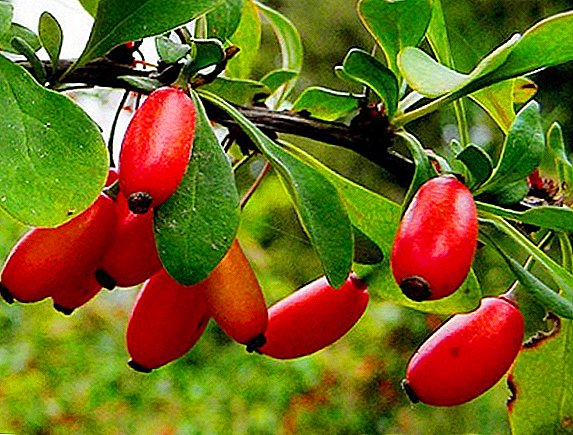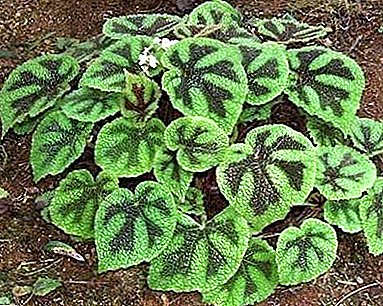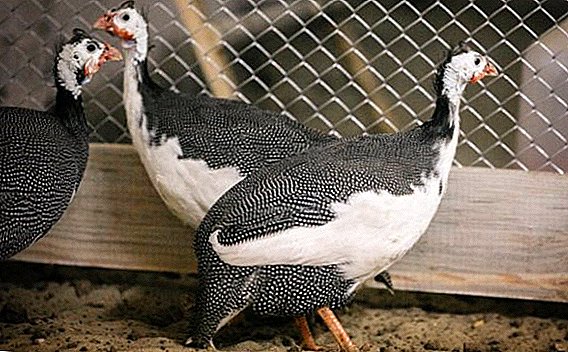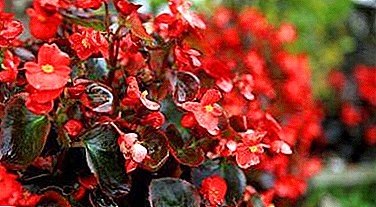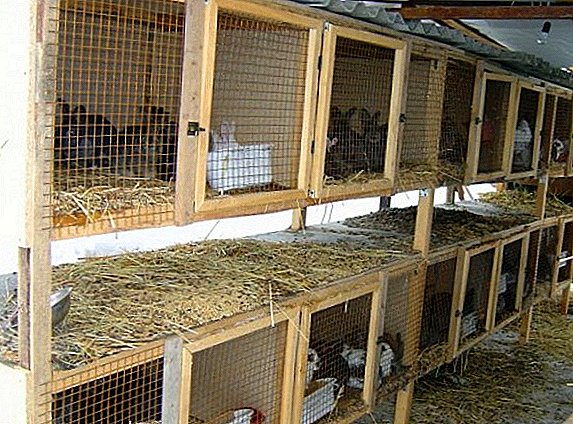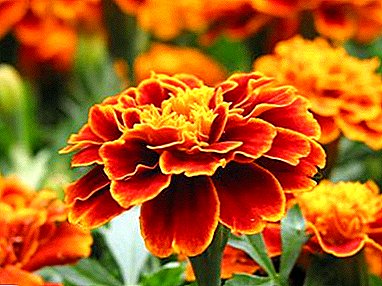
Everyone from childhood knows these unpretentious flowers growing on city beds. We gladly tugged at the faded bright tuft, and in his hand was a hedgehog of sharp, black seeds, similar to needles. This - Tagetes, or, as they are often called, marigolds.
In our article you will learn how to grow flowers in the open field, as well as be able to get acquainted with photos of different types of marigolds.
What are these flowers?
Sempasucuchitl - these amazing words are called these flowers in their homeland, in Mexico. From the hot and humid areas of this country, the plant first came with the conquistadors to Spain, and then spread throughout the world. In each country, Tagetes appeared admirers who used this flower not only to decorate gardens. He found a place for spices in cooking, medicinal raw materials in traditional medicine, a protector of garden and horticultural crops. Read more about the medicinal properties and contraindications to the use of marigolds here, and from this article you will learn about the use of these colors in traditional medicine and cooking.
Botanists refer this herbaceous ornamental plant to the Astrov family. In the native subtropical and tropical climates there are perennial forms of this flower. In our latitudes, heat-loving marigolds live only one summer season. But even in this short time, their varied in color, simple and double flowers, manage to please the fans.
Is it possible to grow outside?
In our country, marigolds are grown mainly outdoors in the open field. Planted in May seedlings, opens the buds as early as June and continuously blooms until the onset of sustained autumn cold weather. For sustainable growth Tagetes need a lot of sun, good watering before flowering and warm weather.
Features of growing in flowerbed
 The marigolds have unlimited possibilities to make any flowerbed, bedding or mixborders interesting. In the store, when choosing a bag of seeds, we must remember that the number of hybrids of this flower increases every year.
The marigolds have unlimited possibilities to make any flowerbed, bedding or mixborders interesting. In the store, when choosing a bag of seeds, we must remember that the number of hybrids of this flower increases every year.
Plants vary in color, volume of buds, growth and diameter of the bush. A careful study of the description on the package gives information on which plan of the flowerbed it will look the most organic.
Kinds
Specialty store sellers often encounter requests from customers to sell them seeds of French, African or Mexican marigolds. Other florist lovers dream to buy planting material of grassy plants for open ground - marigolds upright, thin-leaved, rejected. Despite the apparent diversity, we are talking about the three main lines of breeding these plants.
Geographic names in the names of varieties - a tribute to the history of their distribution from continent to continent. For example, the French Tagetes were called after they were brought from France to England by Protestants who fled from the Reformation. The Tunisian expedition of the Habsburgs contributed to the emergence in Europe of marigolds, who had taken root under the name African. Definition - Mexican, directly indicates the country of origin.
Botanists distinguish three main types of tagges.
Upright (African)
Height reaches 120 cm, diameter of a flower is up to 15 cm, have a wide range of colors from white to rich yellow-orange palette.

Rejected (French)
Multi-flowered, lush bushes. Got their name, thanks to the numerous tilted shoots growing from the main stem. Grow up to 60 cm. Their bright flowers can be monophonic, variegated and even striped.

Fine Leaf (Mexican)
The most tender representatives of this family. One sapling turns into a low (up to 40 cm), half-meter ball, decorated with hundreds of small flowers. The smell of Mexican taggetev reminds lemon flavor. This distinguishes them from their fellows. The color of the flowers varies from bright red to light yellow.

How to make a flower bed with your own hands?
The first rule of flowerbed design is the choice of bright, easy-care plants, that bloom all summer. Marigolds and petunias, which can be planted in a flowerbed (as to how and when to plant marigolds, we described in this article) meet these requirements as well as possible. Unites them allows the similarity in the requirements for light, humidity and nutritional value of the soil.
To create an unforgettable composition of these spectacular Letniki, you need to perform a few simple steps:
- Think over the idea of a flower bed in advance. It is advisable to draw it in scale on paper. This will determine the required number of plants, their colors and height.
For example, a border of undersized lemon marigolds will favorably emphasize the colors of violet spray petunia. Another option - tall, upright Tagetes can grow in the background, towering over a wave of petunia.
- Grow seedlings on their own or purchase in a specialty store. When buying, one should pay attention not only to the color and size of future flowers, but also to the estimated height of the stems. This will avoid the situation when the plants of the first plan are blocking the entire flowerbed.
- Choose a bright sunny place and prepare the ground. Excellent results will be given by the introduction of humus-powder in the amount of 10 kg / m2 and wood ash. This will improve the structure of the soil and provide plants with nutrition for the entire flowering season.
- Water the future flower bed and plant the plants at a distance of 15-20 cm.
- Cover the ground with mulch from rotted sawdust.
Attention! Petunias are more cold-resistant plants than marigolds. This must be considered when calculating the landing time. Return frosts for tags are destructive.
A photo
Further you can familiarize with a photo of a bed on which petunias and marigolds grow:





The necessary conditions
For lush long flowering these plants need:
- Sunny place. The south or west side of the plot is preferred.
- Well drained, fertile soil.
- Regular watering, eliminating stagnant water.
- Air temperature above 10 degrees Celsius. Below this mark, the plants freeze, lose their decorative effect and die at the first frost.
Cultivation and care
Require special attention to young, not grown up plants. Planting should be cleared of weeds, until the marigold bushes do not close and close the soil. Regular watering is needed before the flowering period.
How often to water a flower bed? In the absence of rain, the optimal frequency of watering for good growth and budding - every 1-2 days. Subsequently, it is enough to water in four days. In the case of a two-week drought, the plant may die. Tagetes poorly tolerate stagnant water and can be affected by root rot.
The marigolds planted in the nutrient soil develop well without additional feeding. In poor, sandy soils, plants can be supported by targeted fertilizers for flowering plants. Each bag is provided with detailed instructions for use (about how to feed the flowers for abundant flowering, read here). Fans of permaculture can use nettle extract, diluted in a ratio of 1:10. Pests bypass marigolds side. This is another argument in favor of their cultivation.
Details on how to properly plant and care for marigolds, read here and from this article you will learn about the features of growing this plant.
Warnings and Tips
 Marigolds have strong phytoncidal properties. That is why gardeners traditionally use this plant to protect plantings from pests. These bright flowers can be seen on cabbage beds, next to strawberries, between rows of potatoes. Berry bushes are also happy about this neighborhood.
Marigolds have strong phytoncidal properties. That is why gardeners traditionally use this plant to protect plantings from pests. These bright flowers can be seen on cabbage beds, next to strawberries, between rows of potatoes. Berry bushes are also happy about this neighborhood.
Tagetes - the enemy of aphids, nematodes, whiteflies, bears, Colorado potato beetle and fungal diseases of garden crops. Entering under digging dried parts of this plant disinfects the soil.
Plants that do not tolerate the neighborhood with tagagetes - legumes and cruciferous crops.
Marigolds can cause allergic reactions in people sensitive to their phytoncids. Curb planting along the tracks should be done so that they do not touch the skin of the legs, walking past the person.
Marigolds - beautiful, unpretentious plants with a long period of flowering. A variety of new shapes, colors and flavor are a delight for landscape designers and garden owners. Aesthetic pleasure from communicating with these flowers brings joy and improves health.


